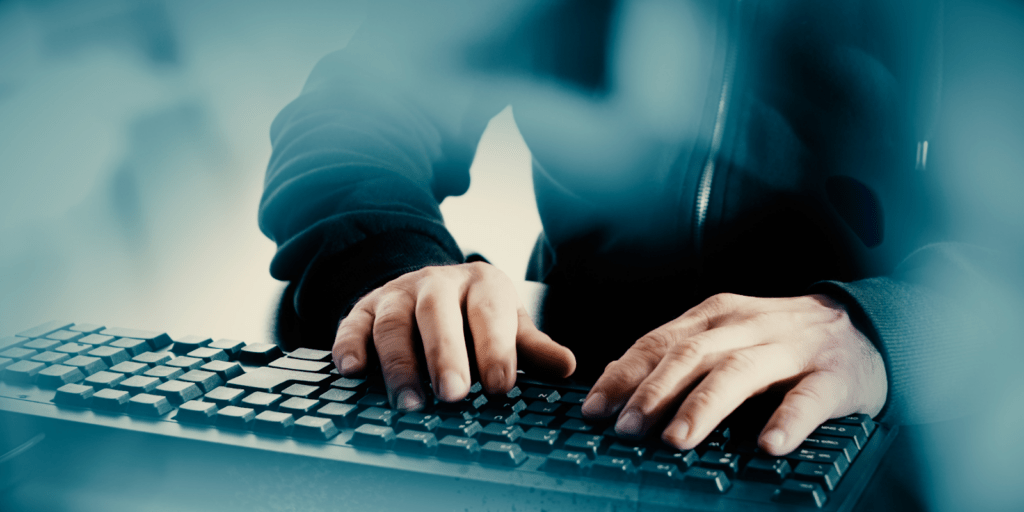In 2009, there were 12.4 million cases of malware infections. In 2018, there were 812.67 million.
That’s a 6,448.39 percent increase in less than ten years.
If you’ve suffered a malware attack, you’re not alone. And if you haven’t yet, you’re in luck, but cybercrime is only growing. As semi-remote work changes the world of business, the world of cybersecurity also evolves. Hackers have been taking advantage of remote workers, meaning business leaders have to be more proactive in protecting their data.
Cybersecurity for remote work can be hard to tackle on your own. That’s why, in this article, we’ll discuss some of the first steps you can take to protect your organization.
How Is Cybersecurity for Remote Work Different?
Cybersecurity for remote work is a different beast than cybersecurity in the office. Company WIFI and physical security protects employees when they’re in the office. But when employees work from home, risk increases.
Public or home WIFI is the most prominent risk. Your business likely has a more secure network than what your employees use at home. Home networks are smaller targets than business networks, but the lack of security makes home networks a risk still.
Theft becomes a concern when your employees leave too. Working in a public place like a coffee shop or library makes it easy for thieves to swipe laptops. If your company works with sensitive materials like healthcare records or financial data, snoopers are a concern as well.
Despite all this, security concerns shouldn’t keep your team from taking advantage of remote work. Instead, let’s discuss some of the ways you can improve cybersecurity for remote work.
Cybersecurity Guidelines for Remote Work
Your cybersecurity plan starts with guidelines you make for your employees and customers. Although protective equipment is also critical, making sure everyone knows how to protect themselves can save you in a pinch.
AUTOMATIC LOGOUTS
Timed logouts for emails, computers, and company accounts are simple but effective. This guideline will take only minutes to implement but may save you years of recovery.
Automatic logouts make it much more difficult for traditional thieves to access a computer. And since most thieves only want your computer and not the data, an automatic logout may be all it takes to protect your information.
On the other hand, online criminals won’t be stopped by automatic logouts. But all protection is good protection. You never know what may save you in the end.
To implement this guideline, consider creating a video that shows how to turn on automatic time-outs. Many computers and online accounts have timeouts by default, but it can’t hurt to make sure.
PRIVILEGED-ACCESS MANAGEMENT
Privileged-access management (PAM) is one of the easiest ways to protect your company’s information. In short, PAM ensures that employees only see what they need to see.
For some businesses who follow HIPAA or SEC guidelines, this doesn’t sound new. But for other organizations, the choice to limit information or abilities might sound abnormal.
PAM limits hackers and thieves to the information that the computer they hack or steal can access. Though a hacker may eventually bypass those permissions, it will at least give your team a head start on stopping them.
Internally, PAM keeps careless or sinister employees from releasing private information. Internal attacks are often the start of larger breaches. But a successful PAM system will help stop these bad actors.
Because this system is so basic, PAM will not stop a full breach. Even still, you can’t overlook this foundation of cybersecurity.
If you need help setting up user permissions, contact a local IT company for help.
EDUCATE YOUR CUSTOMERS
One danger that many businesses forget is the very people they’re trying to help. Customers can be the biggest risk to their own information.
For example, think about a weak password on a customer portal. Customers upload sensitive documents and information under their own username and password. If their password is something weak like their daughter’s name and birthday, their data is at risk.
A hack into your client’s account likely won’t cause a full breach, especially if you have a PAM system in place. But it could hurt your reputation, and you may even lose a customer, even if it’s their password to blame.
A simple fix for this is requiring better passwords. But more complex customer security risks are harder to stop without more education.
Consider running a campaign that educates your customers about cybersecurity for their business. Explain that you’re doing everything you can to reduce risk but that they can help as well.
Educating your customers protects your organization and lets them know that you care. Plus, they may even learn how to secure their own company.
McKinsey and Company suggests providing high-level customers with free antivirus and identity-monitoring services. Many organizations don’t need this level of security, but it’s worth considering.
Cybersecurity Equipment for Remote Work
Guidelines can do a lot for your team, but equipment can also improve your team’s security. Consider providing a few of these tools to help stay safe when working remotely.
VPN
A Virtual Private Network (VPN) is a great way to protect your data when working on a public or home WIFI.
In basic terms, VPNs encrypt your data before connecting to the internet. The data goes to the network, but it isn’t easy to discover where it originated.
If someone wanted to trace it back to you, it’s not impossible. But it makes it harder to track because the data looks like it’s from somewhere else in the world. Plus, hackers would rather capture data that is less secure.
Again, like most cybersecurity tools, a VPN isn’t foolproof. Even still, adding another layer of protection is always valuable.
MOBILE HOTSPOT
Full-time remote employees may often rely on public WIFI if they travel regularly. To reduce risk, consider supplying them with a mobile hotspot.
A mobile hotspot, even from your phone, is much safer than public WIFI. No one else can access it, and unless people are looking for a network, chances are they won’t know it exists.
One important rule is to create a very secure password for the hotspot. An unlocked mobile hotspot is a gold mine for a hacker. The only data on the hotspot is yours, so a breach means that you’re the one in the red.
PASSWORD KEEPER
Have you ever tried to create a secure password and thought to yourself, “How am I going to remember this?” If so, you might need a password keeper. Passwords are becoming easier and easier to crack, but complex, unique passwords can keep your business safe.
There are plenty of tools that will generate and save good passwords for you. After downloading and uploading passwords, the keeper will pop up whenever you’re logging into a site. All you need to do is remember one password to access every other password. No memorizing. No sticky notes.
This neat tool can tell you how fast a computer could decipher your password. The password “coolguy8” can be cracked in just 1 hour. However, the random password “duld@pauc*viok3PSAN” would take a computer 5 hundred quadrillion years to unlock.
Make sure your team is on the right side of that scale. Many password keepers offer corporate accounts to ensure that everyone on your team is staying safe.
MULTIFACTOR AUTHENTICATION
Multifactor authentication is simple and effective. It might be frustrating to use sometimes, but it can also keep your information secure.
A hacker can pass multifactor authentication if they have accessed your other accounts. Combined with other safeguards, though, multifactor authentication can keep all your accounts safe.
Cybersecurity Education for Remote Work
Earlier, we discussed how many companies are attacked by ransomware. But what’s causing those attacks to be successful?
Believe it or not, it’s human error.
In fact, one recent study found that human error caused 95 percent of successful cyberattacks. As a business owner, this should be alarming.
To stop these attacks, especially with a semi-remote team, employers have to educate their employees.
But what does cybersecurity education for remote work look like?
To start, you can send a free phishing test to your employees. This test will give you a baseline of how at-risk you are. In general, 35 percent of your employees will fail the test the first time.
Your results will dictate your next steps. You might find that your team is safe, meaning annual training is enough. But negative results may indicate that some team members need regular, interactive training.
GOOGLE THREAT ANALYSIS CASE STUDY
Unfortunately, even with good training, there’s still a risk someone makes a mistake or downloads malware. Even professionals can fall for the tricks.
This year, North Korean government-backed groups have successfully attacked cybersecurity employees. This long-game scheme went under the radar for some time before Google’s Threat Analysis Group (TAG) caught it.
Hackers portray themselves as cybersecurity professionals on Twitter and on various blogs. Eventually, the hackers begin interacting with real professionals. Thinking they’re on the same team, the real professionals begin to build a relationship with the hackers.
The attack comes when the hackers ask the professionals to collaborate on research. The bad guys send a shared project file, and after the victim opens it, malware attacks their computer.
Chances are most small businesses won’t have to deal with such elaborate attacks for now. But preparing for the worst starts with an effective cybersecurity education plan.
Next Steps: Cybersecurity for Remote Work
Hopefully, you now have a few cybersecurity for remote work tips you can use to protect your business. Remember that more protection is always better.
Need help setting up your cybersecurity protocols? Learn how our IT team can help you by contacting us today.


